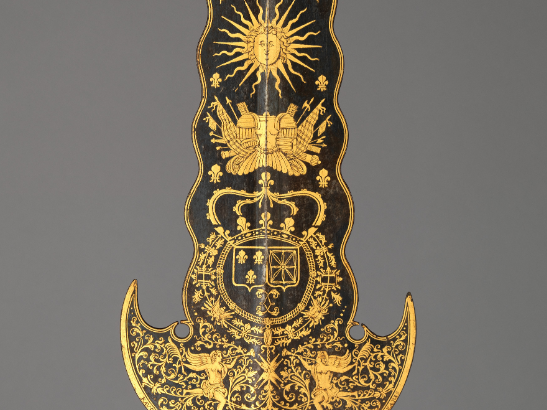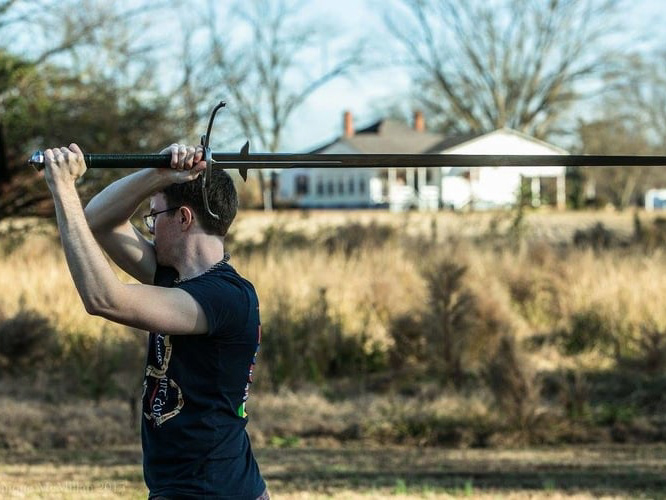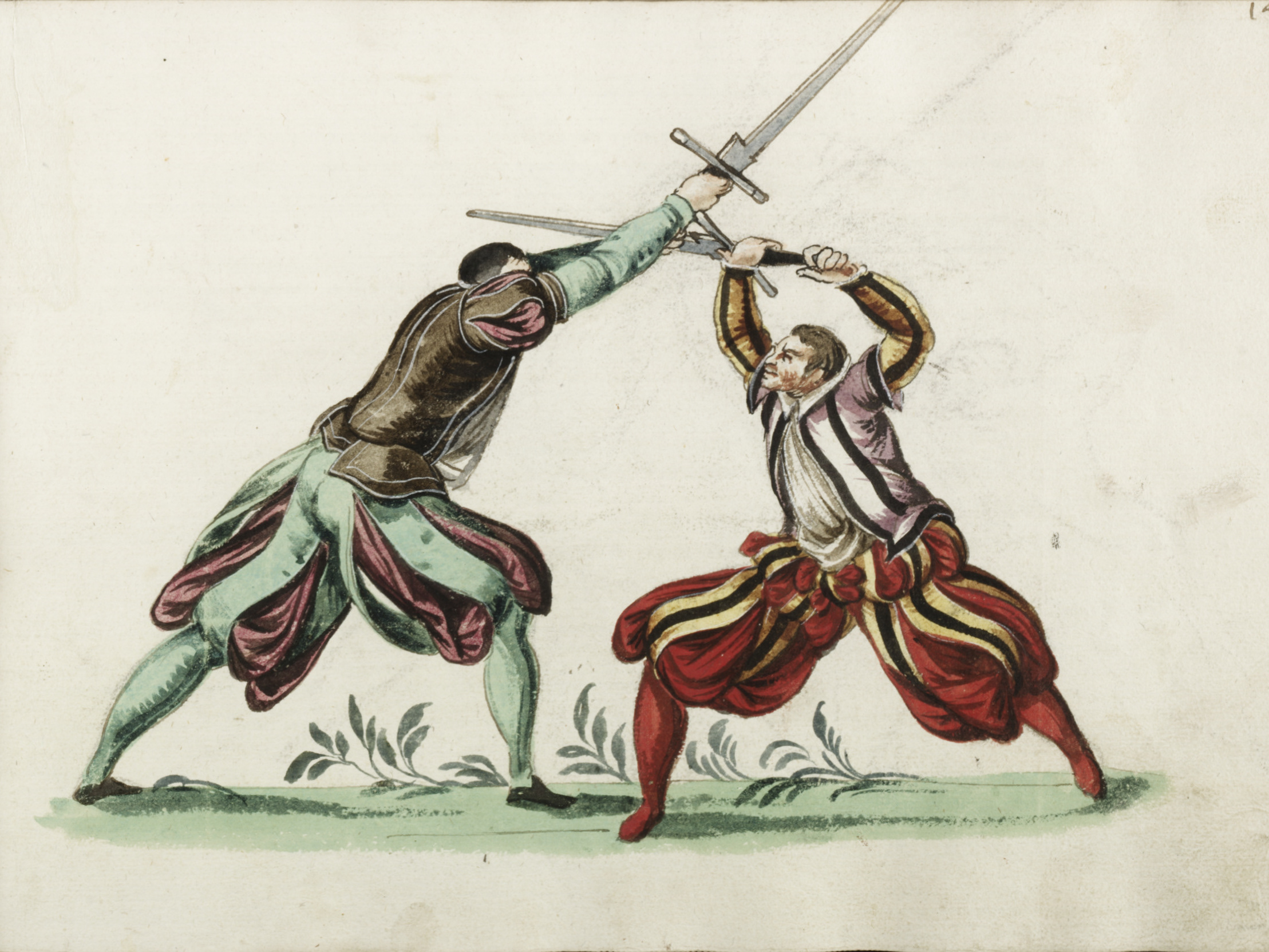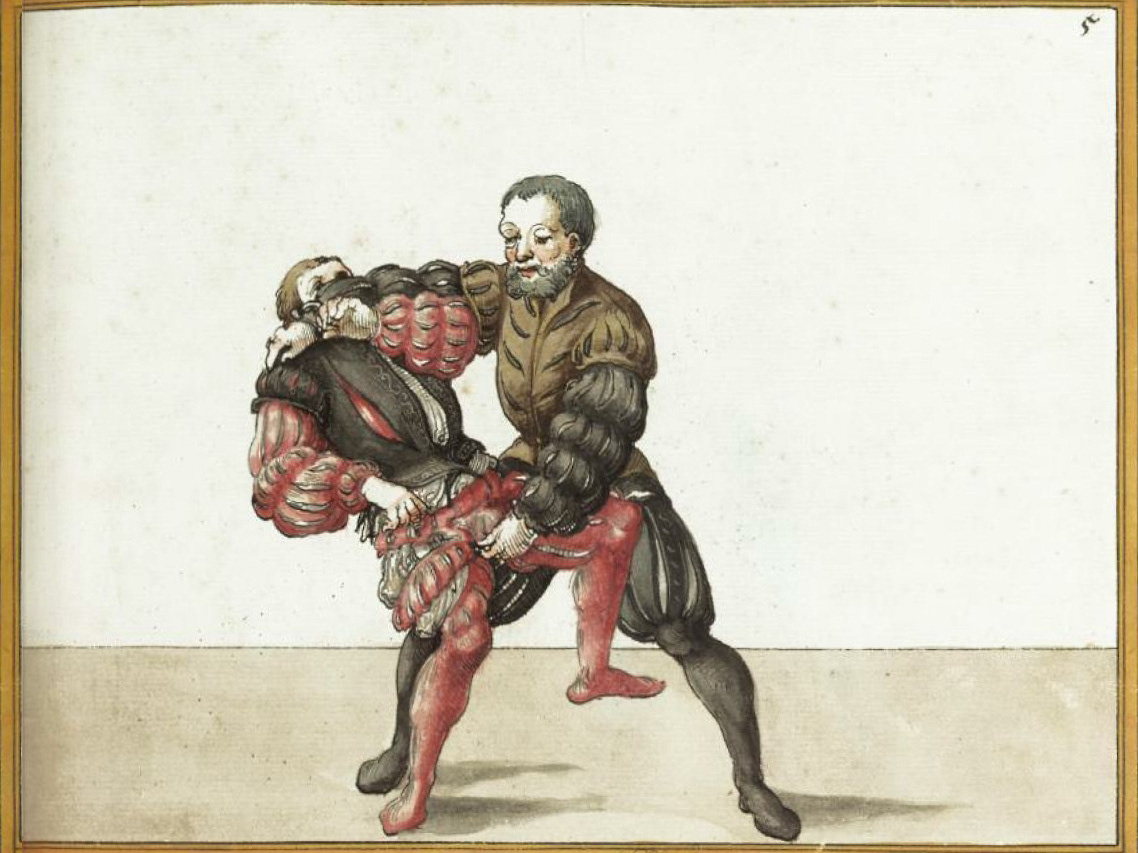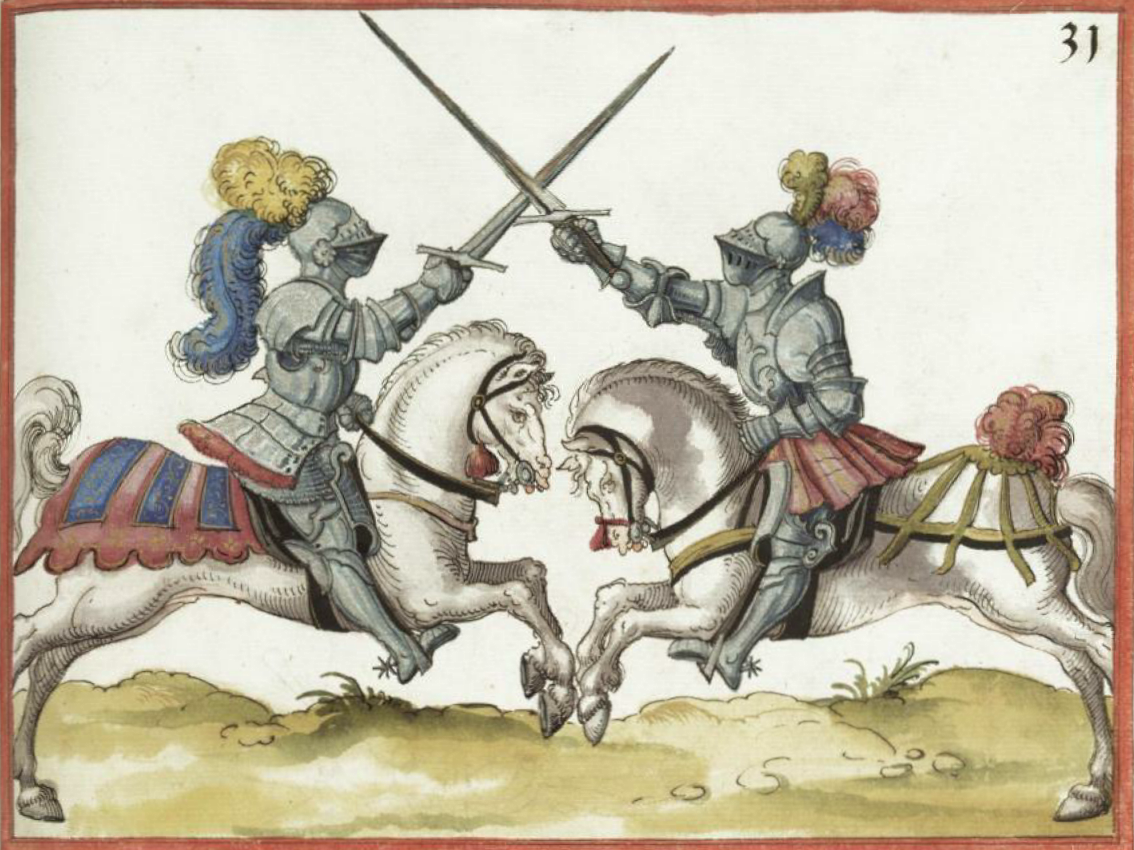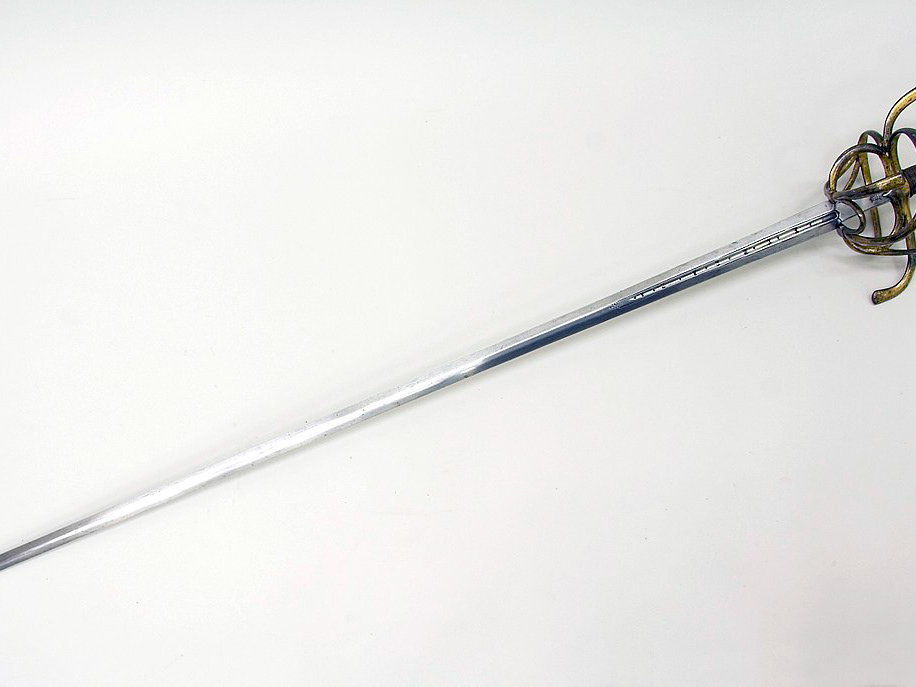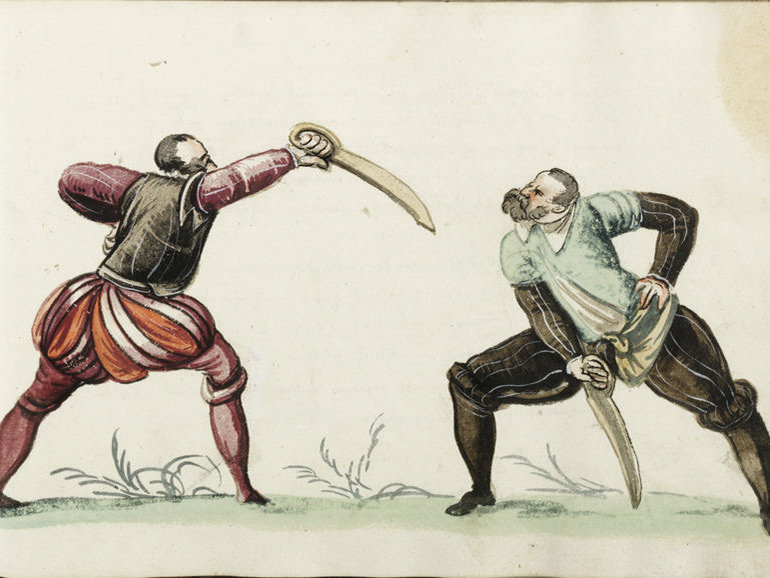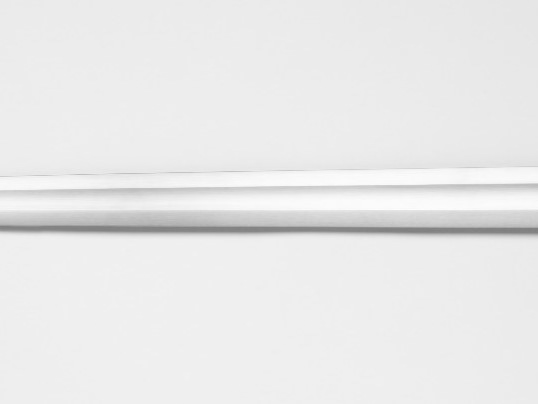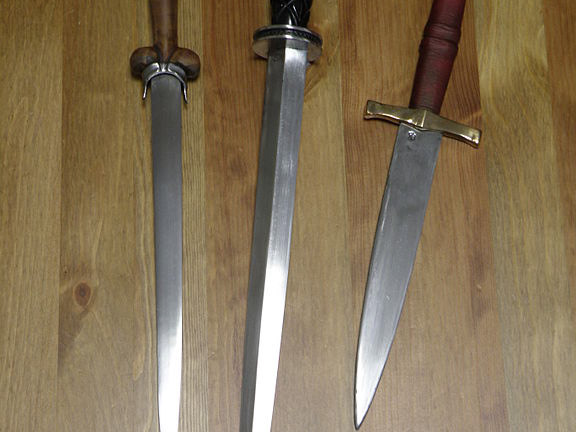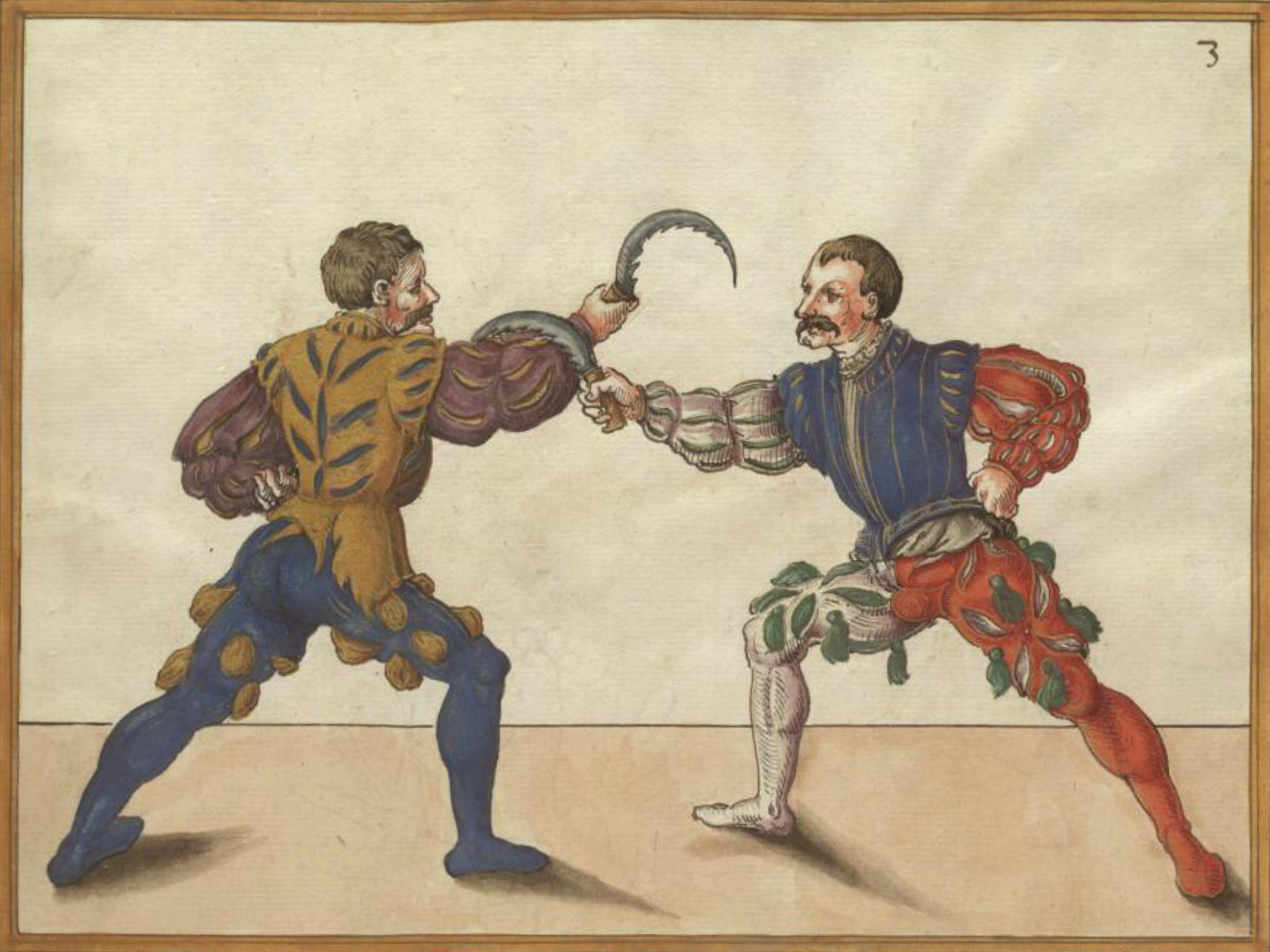Introduction
The sidesword is a transitional weapon between the arming sword of the Middle Ages and the rapier of the Renaissance. It was, in essence, a cut-and-thrust arming sword with the addition of a complex hilt that protected the user’s hand. It was used either by itself or with something in the offhand, usually a dagger or shield. It could also be used with a cloak, gauntlet, or other defensive objects. [1]
Sideswords are typically 35″ to 40″ in total length and weighed between two to four pounds.
A breakdown of sidesword anatomy.
Courtesy of Purpleheart Armory, editied by Nicholas Allen. All Rights Reserved.
Sources
Italian
The sidesword was used widely across Europe, but its use was most concentrated and celebrated in Italy, specifically in the school of Bolognese Swordsmanship. This system is based on the surviving works of Lippo Bartolomeo Dardi and served as the foundation for the work of Antonio Manciolino, Achille Marozzo, Giovanni dall'Agocchie, and Angelo Viggiani dal Montone. [2] [3]
Antonio Manciolino (1531): Manciolino published a treatise called Opera Nova ("A New Work"), which is the oldest extant treatise in the Dardi or "Bolognese" school of swordsmanship. Despite the breadth and detail of his work, Manciolino's efforts were overshadowed by the release of Marozzo's even more extensive work on Bolognese fencing thirteen years later.
Achille Marozzo (1536): Marozzo’s Opera Nova seems to have become the dominant work in the Bolognese school of swordsmanship thanks to its depth and breadth. In addition to covering the sidesword, both alone and with a buckler, he also includes techniques for the greatsword, pole weapons, grappling, dagger, and dueling.
Giovanni dall'Agocchie (1572): Little is known about dall'Agocchie other than the fact that he published a treatise on sidesword in the Bolognese school. Instead of images with captions, he presents his techniques in the form of a dialogue between two people.
Angelo Viggiani dal Montone (1575): Viggiani was was Bolognese by birth. In 1551, Viggiani completed a treatise on warfare, including fencing with the side sword shortly before he died. His work was presented to Maximillian II King of the Romans and later Holy Roman Emperor after his death. Like dall'Agocchie’s text, it is also presented in the form of a conversation between two people.
German
Paulus Hector Mair (1540): Mair was a collector of fencing manuscripts and owned over a dozen fencing manuals over the course of his life. Most of the treatises Mair published were revisions or expansions upon the works in his collection. His rapier section features weapons that look identical to Italian sideswords and feature much more cutting than later rapier systems. He also includes instructions for how to use offhand weapons like the buckler, and parrying dagger in addition to the primary cut and thrust weapon.
Joachim Meyer (1560-1570): While he is well known for his quarterstaff and polearm work, Meyer also has a rapier system that is designed to be used with the lighter single-hand swords spreading north from Iberian and Italian lands, i.e. the sidesword. His system seems to be a hybrid creation, integrating both the core teachings of the 15th-century Liechtenauer tradition as well as components that are characteristic of the various regional Mediterranean fencing systems, including, perhaps, teachings derived from the treatise of Achille Marozzo.
Demonstration
Ilkka Hartikainen demonstrates the core principles of the sidesword.
A demonstration of sparring with the sidesword.
Equipment
I've made an extensive list of recommended sidesword trainers for beginners in HEMA.
Works Cited
Footnotes
[1] "Our Martial Arts", Academie Duello - Learn Swordplay, 2020, https://www.academieduello.com/courses/our-martial-arts/.
[2] Tommaso Leoni and Antonio Manciolino, The Complete Renaissance Swordsman: Antonio Manciolino’S Opera Nova (1531) (repr., Freelance Academy Press, 2010).
[3] Thomas A. Green and Joseph R. Svinth, Martial Arts Of The World: An Encyclopedia Of History And Innovation (repr., Santa Barbara, Calif.: ABC-CLIO, 2010).
[4] "Antonio Manciolino ~ Wiktenauer ~☞ Insquequo Omnes Gratuiti Fiant", Wiktenauer.com, 2020, https://wiktenauer.com/wiki/Antonio_Manciolino.
Citations
"Antonio Manciolino ~ Wiktenauer ~☞ Insquequo Omnes Gratuiti Fiant". Wiktenauer.com, 2020. https://wiktenauer.com/wiki/Antonio_Manciolino.
Green, Thomas A., and Joseph R. Svinth. Martial Arts Of The World: An Encyclopedia Of History And Innovation. Reprint, Santa Barbara, Calif.: ABC-CLIO, 2010.
Leoni, Tommaso, and Antonio Manciolino. The Complete Renaissance Swordsman: Antonio Manciolino’S Opera Nova (1531). Reprint, Freelance Academy Press, 2010.
"Our Martial Arts". Academie Duello - Learn Swordplay, 2020. https://www.academieduello.com/courses/our-martial-arts/
Written by Nicholas Allen, founder and former head instructor of the VCU HEMA club.
Edited by Kiana Shurkin, xKDF
Historical sources fact-checked by Michael Chidester, Editor-in-Chief of Wiktenauer
